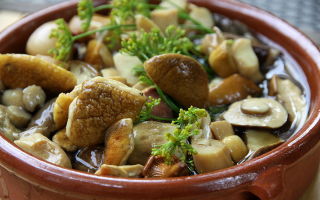Content
- 1 What are mushrooms
- 2 Edible mushroom names
- 3 The chemical composition and calorie content of mushrooms
- 4 Why mushrooms are useful for the human body
- 5 Can pregnant and lactating mothers eat mushrooms
- 6 At what age can mushrooms be given to children
- 7 In what form are mushrooms most useful?
- 8 Which mushrooms are better: cultivated or forest
- 9 Harm of mushrooms and contraindications
- 10 Mushroom poisoning
- 11 How to pick mushrooms correctly
- 12 How and how much you can store mushrooms at home
- 13 Conclusion
The benefits and harms of mushrooms for the body have been well studied. They are added to the daily diet, used for weight loss and treatment of diseases. Before use, the calorie content and chemical composition of the product are taken into account, in case of danger of poisoning, precautions are taken.
What are mushrooms
Mushrooms are a separate kingdom of living nature. These include organisms that feed on ready-made organic matter without producing chlorophyll. There are several types of fungi: cap, mold, tinder parasites, yeast. Their vegetative bodies are composed of many branching filaments.
The beneficial properties of mushrooms are well known: they decompose organic materials and increase soil fertility. They are also used for household and food purposes to obtain antibiotics and other medicines.
Edible mushroom names
In nature, there are about 300 varieties with nutritional value. They are allowed to be eaten without harm to health. They differ from poisonous specimens in color, shape, taste and smell.
Names and photos of mushrooms with the most beneficial properties:
- boletus;

- aspen mushrooms;
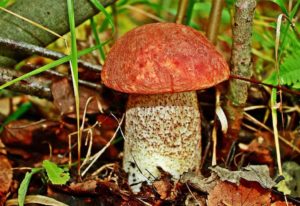
- champignons;
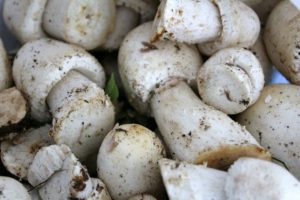
- boletus;
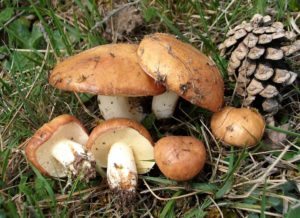
- honey mushrooms;
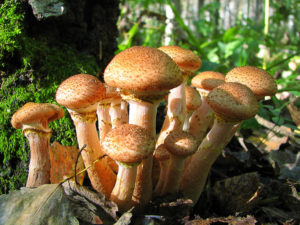
- waves;
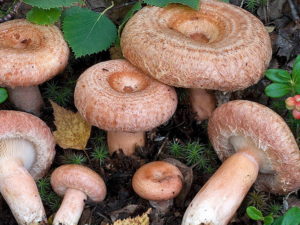
- boletus;

- russula;

- milk mushrooms;
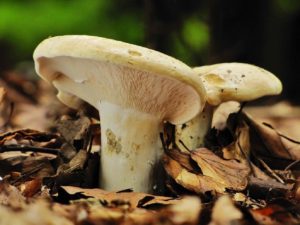
- oyster mushrooms;
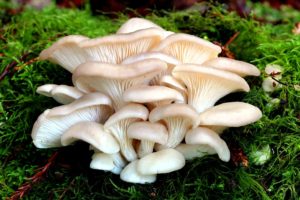
- chanterelles.
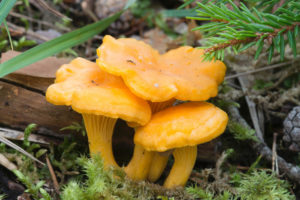
The chemical composition and calorie content of mushrooms
The healing properties of mushrooms are due to their chemical composition. They contain up to 90% water, the rest are useful substances (fiber, amino acids, vitamins B3, B9, C, E, potassium, magnesium, calcium, sodium, phosphorus, fluorine, cobalt, iron).
The nutritional value:
- proteins from 2 to 36%;
- fats from 0.4 to 4.5%;
- carbohydrates from 1.7 to 23.5%.
Due to their low calorie content, mushrooms are widely used for weight loss. 100 g of the product contains 25-40 kcal. The most high-calorie ones are dried boletus, boletus and boletus. Pickled, boiled, and baked foods have fewer calories.
The beneficial properties are largely attributed to the high protein content. However, due to the fiber, they are poorly digested and difficult for the digestive tract to absorb. Therefore, the caps and legs are crushed before use and chewed well.
Why mushrooms are useful for the human body
The product is useful for the body of both women and men. In some cases, it is allowed to use it during pregnancy.
The benefits of mushrooms for women
The benefits of mushrooms for a woman's body:
- are able to replace meat for vegetarians or for weight loss;
- relieve anxiety and irritation, improve the functioning of the nervous system;
- strengthen the tissues of teeth, bones, nails, hair, skin;
- increase immunity;
- normalize metabolism;
- prevent the spread of cardiovascular diseases;
- reduce blood cholesterol;
- prevent the development of breast cancer.
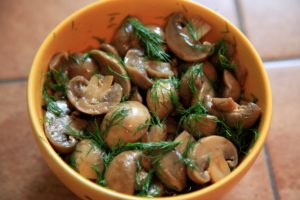
Why mushrooms are useful for men
Useful properties for men:
- strengthens blood vessels, bones and teeth tissues;
- reduce the risk of developing a heart attack and other diseases of the cardiovascular system;
- help to cope with stress;
- normalize blood pressure;
- improve memory;
- are used to combat infertility and Parkinson's disease;
- inhibit the development of cancer.
Can pregnant and lactating mothers eat mushrooms
It is allowed to eat mushrooms during early pregnancy. Be sure to choose a quality product, which is carefully boiled before use. The safest species are preferred: champignons and oyster mushrooms.
Eating mushrooms while breastfeeding is not recommended due to their high toxicity. They may contain heavy metals and other harmful substances. Spores also travel to the lungs and cause allergies. As a result, the product can seriously harm the baby, cause colic and other digestive problems. It is introduced into the mother's diet no earlier than 4-6 months of lactation.

At what age can mushrooms be given to children
Mushrooms are included in the diet of children with caution, then they will not do harm. Due to the property of being digested for a long time, it is better not to give this product to a child. The human digestive system is finally formed by the age of 14. Otherwise, the likelihood of an eating disorder is high.
In what form are mushrooms most useful?
Mushrooms are eaten only after heat treatment. As a result, both useful and harmful substances are destroyed. For mushroom dishes to be beneficial, it is important to properly prepare the ingredients.
The benefits of dried mushrooms
After drying, the fruit bodies are reduced in size, which simplifies their storage. Such a product retains its taste and aroma for a long time and contains more protein. The most useful properties are honey mushrooms, boletus, boletus, boletus, champignons, chanterelles.
The health benefits and harms of dried mushrooms are explained by the increased calorie content - about 290 kcal. The product supports metabolism, work of the heart, blood vessels, immune and nervous systems. But it is not recommended to include it in the diet for stomach problems or individual intolerance.
Are pickled mushrooms good for you?
Marinating involves the addition of citric or acetic acid, as well as herbs and spices. In the cooking process, a marinade of various concentrations is used. The least harm to the stomach is a weakly acidic solution containing 0.2 to 0.6% acid.
The use of pickled mushrooms is a positive effect on blood vessels, heart, nervous system. The product removes cholesterol and prevents the development of cancer. Pickled blanks are not recommended for people suffering from gastrointestinal diseases.
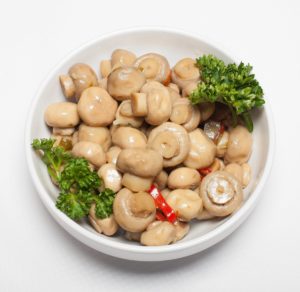
Another canning method is salting. The components are soaked or boiled in water, after which they are poured with brine. The benefits of salted mushrooms are associated with the absence of vinegar, but the shelf life of such blanks is reduced.
Which mushrooms are better: cultivated or forest
In nature, mushrooms grow in forest ash, in clearings and clearings. However, they are grown artificially in greenhouses and greenhouses. Each of these varieties has advantages and disadvantages.
The benefits of forest mushrooms are undeniable if they grew in ecologically clean areas. It is not recommended to eat species growing near highways, factories and factories. Their fruiting bodies absorb pollution and heavy metals that are dangerous to humans.
The cultivated product does not contain harmful substances if the cultivation technology is followed. Usually mushrooms are delivered already cleaned from dirt and natural debris, they are available in stores at any time of the year.The main disadvantage is the high cost, since it is important to provide certain conditions in the greenhouse.
Harm of mushrooms and contraindications
Before use, be sure to take into account the harmful properties of mushrooms. Their fruiting bodies contain chitin, which interferes with the absorption of other substances. This negatively affects the digestion process. Heavy metals and other harmful components can remain in the mycelium, which are absorbed from the environment.
Main contraindications:
- any diseases of the gastrointestinal tract;
- kidney and liver diseases;
- eczema;
- gout.
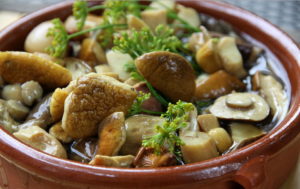
Mushroom poisoning
If you do not follow the consumption rate or use low-quality products, then you can nullify all the beneficial properties.
Symptoms and signs of poisoning
The human condition is negatively affected by the use of poisonous or low-quality types of mushrooms, as well as violations of the canning technology. Symptoms appear within 24 hours.
Poisoning is indicated by the following signs:
- temperature rise to 37 ° C and above;
- weakness, headache;
- nausea and vomiting;
- stomach ache;
- gas and diarrhea;
- belching with a bitter aftertaste;
- convulsions;
- high sweating;
- violation of consciousness;
- dehydration (dry mouth, decreased blood pressure, tachycardia).
First aid for poisoning
When warning signs appear, call an ambulance. Before the arrival of doctors, the victim should drink clean water and induce vomiting. To remove toxins, take Polysorb or activated carbon. The patient should remain in bed, a heating pad can be applied to his legs.
In the toxicology department, the patient is washed with stomach, laxatives and other medications are prescribed. A blood test is mandatory.
How to pick mushrooms correctly
In order for the mushrooms to show their beneficial properties and not cause harm, you need to collect them correctly:
- go to environmentally friendly places, remote from highways and factories;
- cut off the fruit bodies with a sharp knife and put them in a basket;
- do not take unfamiliar or dubious species;
- discard wormy or overgrown specimens;
- process as soon as possible after collection.
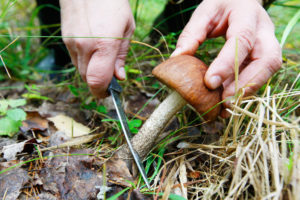
How and how much you can store mushrooms at home
Fresh mushrooms are kept at home least of all. Some specimens start to deteriorate after a few hours. They are kept in the refrigerator for no more than 3 days. Therefore, immediately after collection or purchase, they begin processing until they have lost their useful properties.
After processing, the shelf life of the product is significantly increased:
- after drying - up to 1 year;
- after pickling in jars with metal lids - 1 year;
- canned preparations - up to 5 years.
Conclusion
The benefits and harms of mushrooms largely depend on the place where they grew, the method of processing and the rate of use. It is important to choose high-quality specimens, observe the technology of preparation and storage, then they will show their useful properties.

